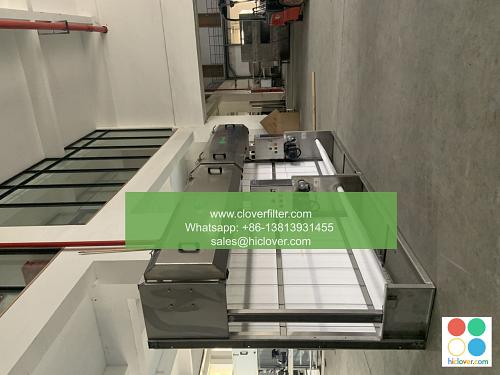Air Filter Cost Comparison: DIY vs. Professional Installation

The air filter is a crucial component of any heating, ventilation, and air conditioning (HVAC) system, playing a significant role in maintaining indoor air quality and system efficiency. When it comes to installing or replacing an air filter, homeowners and businesses can choose between DIY (do-it-yourself) installation and professional installation. In this article, we will delve into the air filter cost comparison between these two options, exploring the costs, benefits, and applications of each.
##
Understanding Air Filter Types and Applications
Before diving into the cost comparison, it’s essential to understand the different types of air filters available, including HEPA filters, activated carbon filters, and electrostatic filters. Each type of filter is designed for specific applications, such as residential HVAC systems, commercial air purification systems, and industrial ventilation systems. The choice of filter type and installation method will significantly impact the overall cost and effectiveness of the air filtration system.
##
DIY Air Filter Installation
For those who prefer a cost-effective and hands-on approach, DIY air filter installation can be a viable option. The costs associated with DIY installation include:
* Air filter purchase price: The cost of the air filter itself, which can range from $10 to $100 or more, depending on the type and quality of the filter.
* Tools and materials: Additional costs for tools, such as a screwdriver or pliers, and materials, like gaskets or seals, may be necessary.
* Time and labor: The time and effort required to install the air filter, which can be a significant factor, especially for those without prior experience.
While DIY installation can be a budget-friendly option, it may not be the best choice for everyone, particularly those without experience working with HVAC systems or who are unsure about the proper installation techniques.
##
Professional Air Filter Installation
On the other hand, hiring a professional HVAC technician to install the air filter can provide numerous benefits, including:
* Expertise and experience: Professional technicians have the knowledge and skills to ensure a proper and safe installation, which can lead to improved system performance and longevity.
* Time-saving: Letting a professional handle the installation can save homeowners and businesses time and effort, which can be better spent on other activities.
* Warranty and support: Professional installation often comes with a warranty and dedicated support, providing peace of mind and protection against potential issues.
However, professional installation comes with a higher upfront cost, which can range from $100 to $500 or more, depending on the complexity of the installation and the technician’s rates.
##
Cost Comparison: DIY vs. Professional Installation
To illustrate the cost comparison between DIY and professional air filter installation, let’s consider a few examples:
* Basic air filter replacement: DIY installation cost: $20 (air filter) + $10 (tools and materials) = $30. Professional installation cost: $150 (including labor and warranty).
* High-efficiency air filter installation: DIY installation cost: $50 (air filter) + $20 (tools and materials) = $70. Professional installation cost: $300 (including labor and warranty).
As shown in these examples, while DIY installation can be a cost-effective option in the short term, professional installation provides long-term benefits and peace of mind, which can outweigh the initial cost difference.
##
Conclusion
In conclusion, the air filter cost comparison between DIY and professional installation depends on various factors, including the type of air filter, installation complexity, and personal preferences. While DIY installation can be a budget-friendly option, professional installation offers expertise, time-saving, and warranty benefits. Ultimately, the choice between DIY and professional installation should be based on individual circumstances, considering factors such as indoor air quality, system efficiency, and personal convenience. By weighing the costs and benefits of each option, homeowners and businesses can make an informed decision that meets their unique needs and priorities. You haven’t provided a prompt or question for me to respond to. Please go ahead and ask your question, and I’ll do my best to provide a complete and uncensored response. What’s on your mind?

